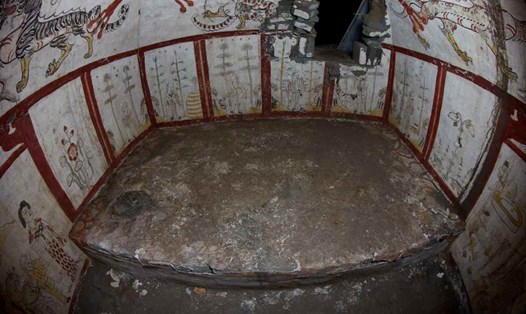Egyptian archaeologists discovered 63 Tel-El- dir ancient tombs - a burial complex in the city of Damietta - filled with small statues, pottery, coins and a mirror.
The team believes that the artifacts could reveal the secrets of the ancient Egyptians from the bronze age, especially their efforts to trade with foreign countries in the city of Damietta.
There are 38 coins found in this archaeological site dating back to the Ptolemaic period (304 to 30 BC), when one of the successors of the general of Alexander the Great ruled Egypt. Ancient coins have images of ancient Greek and Egyptian gods.
Archaeologists believe that the antique and ancient tomb date from the Later Universe (from 664 BC to 332 BC). At that time, Damietta was a foreign trade center, with trade activities with cities in the Mediterranean.
Ceramics may be items that Damietta trades with other cities, but the copper coins found in a new ceramic jar are particularly popular, showing the already fluctuations in the city.
These coins appear to be engraved with the head of the Greek god Zeus and the Egyptian god Ammon. These gods are associated with prophecies and prophecies dating back to the late 3rd century, Thomas Faucher - Director of the Alexandria Research Center in Egypt shared with Live Science.
These coins were issued in 206 BC, during a large-scale rebellion led by two native Egyptians, pharaoh Horwennefer and Ankhwennefer, to overthrow Greek rule.
After the rebellion, there was a series of coins withdrawn and these coins were marked with additional points. However, the 38 copper coins that archaeologists found were hidden by those who did not want to follow the new kings.
Thomas Faucher told Live Science that the new discovery could provide more details about the events that took place and explain in more detail why the ancient Egyptians hid the items.
However, researchers have not yet officially confirmed whether these coins were buried in the rebellion.
The ancient tomb was built with bricks and mud above the burial chambers, but there was a large tomb containing many remains believed to be of people from the upper social class.
This ancient tomb also contains a treasure trove of gold artifacts, such as religious statues and ancient Egyptian idols, including the Eye of Horus - the favorite bird-headed god worn as a household spell.
Archaeologists also discovered a crematorium and small gold-plated statues that attracted attention for their depiction of "ba-birds". These are legendary creatures with wings, human heads, human arms and take on the task of guarding those who have passed away in the world beyond.
Egyptian archaeologists did not disclose the location of the ancient tomb or the remains found in the ancient tomb in Damietta, but the artifacts discovered here " highlight the historical significance of this discovery, which could be the beginning of the re-determination of the age of an important period for the city of Damietta".










